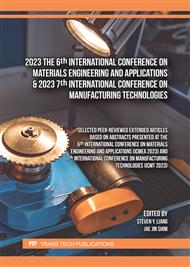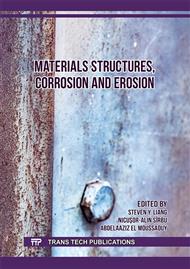p.71
p.77
p.89
p.95
p.103
p.109
p.117
p.125
p.133
Effect of Milling on Forest Residue-Derived Biochar with High Energy Milling Ellipse 3 Dimension
Abstract:
The research on the synthesis of nanoparticles using the high-energy ball milling method technique is limited in Indonesia. This work aims to reduce the size of the remaining biochar powder from the lignocellulosic residual forest (twig) into a nanoparticle. High-Energy Ball Milling-Ellipse 3 Dimension (HEM-E3D) was used to grind the biochar through 212 um mesh with time variations of 0, 2, 3, and 4 hours. The speed of the HEM-E3D is 180 rpm, while the milling on and off times are 10 minutes and 1 minute, respectively. The Particle Size Analyzer (PSA) characterization data show that 4 hours is the optimal milling time with 282,7 nm and evenly distributed particles. The morphology of powder biochar resemblant sheets and an average size of 205 nm at 60000x magnification. There were no discernible and damaged functional group alterations in the surface functional groups as determined by Fourier Transform Infrared Spectroscopy (FTIR). The adsorption experiment using a thin film method shows that powder biochar could reduce heavy metal concentrations of Cr (VI).
Info:
Periodical:
Pages:
103-108
Citation:
Online since:
September 2023
Price:
Сopyright:
© 2023 Trans Tech Publications Ltd. All Rights Reserved
Share:
Citation:



